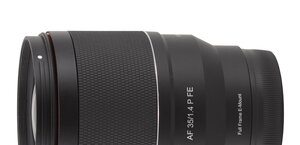Olympus M.Zuiko Digital ED 30 mm f/3.5 Macro
5. Chromatic and spherical aberration
Chromatic aberration
The longitudinal chromatic aberration is not a serious problem. Its slight influence can be noticed near the maximum relative aperture but it would be difficult to carp about it seriously.
 |
The lateral chromatic aberration can be described in similar way – its performance depending on aperture values for both bodies we used in the test is presented below.
Please Support UsIf you enjoy our reviews and articles, and you want us to continue our work please, support our website by donating through PayPal. The funds are going to be used for paying our editorial team, renting servers, and equipping our testing studio; only that way we will be able to continue providing you interesting content for free. |
- - - - - - - - - - - - - - - - - - - - - - - - - - - - - - - - - - - - - - - - - - - - - - - -

You deal here with results on a level of 0.07–0.08%; these values are still low although close to the medium border. The Panasonic 2.8/30 Macro performed very much the same. It seems there’s nothing to worry about.
| Olympus E-PL1, RAW, f/5.6 | Olympus E-PL1, RAW, f/11.0 |

|

|
Spherical aberration
The tested lens doesn’t have any „focus shift” effect. When it comes to appearance of defocused circles of light in front of and behind the focus there are no significant differences there. The image after the focus has the rim a bit more intensive but, by and large, it is the only symptom that spherical aberration might not be corrected in a perfect way.
| Olympus E-M5 II, f/3.5, in front of | Olympus E-M5 II, f/3.5, behind |

|

|






